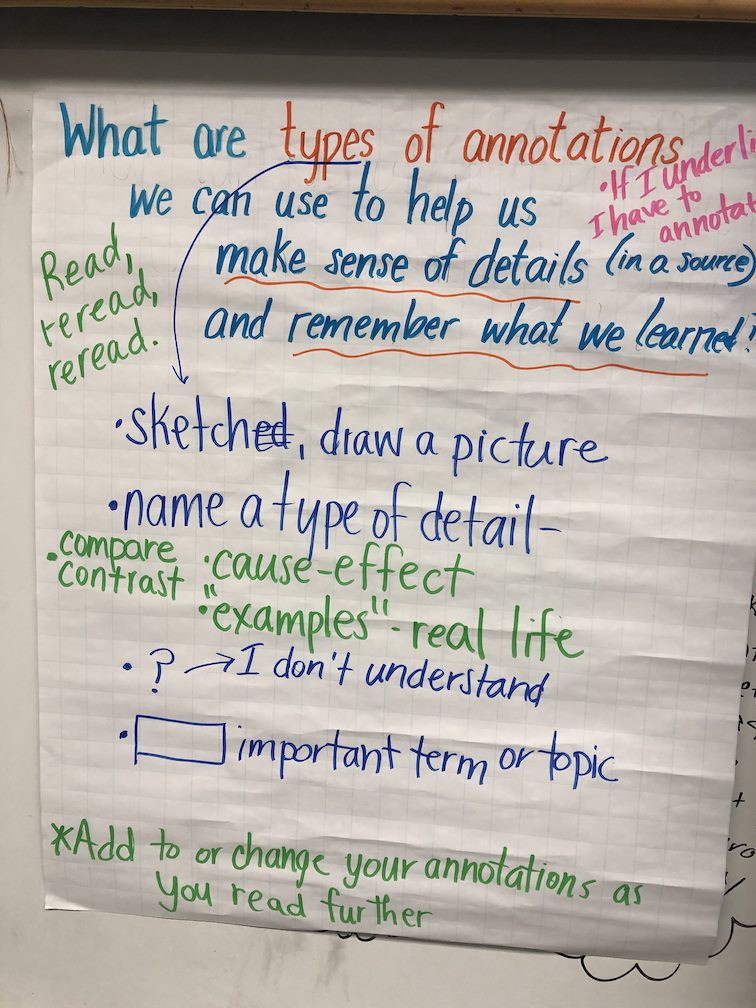

- #Good annotations v bad annotations students full#
- #Good annotations v bad annotations students professional#
elegans community to annotate data for WormBase initiated the collaborative partnership that we describe below. elegans conference, neither of which were available. elegans laboratory on campus and presenting at a local C. Students’ usual activities include a scientific collaboration with another C. elegans and usually runs as a one-quarter, 10-week intensive laboratory (10 contact hours per week).

The course focuses on the cell biology and neuroscience of the model organism C. The cessation of in-person teaching due to the COVID-19 pandemic in March 2020 meant that our entire Advanced Cell Biology CURE ran as an online course. elegans may contribute annotations to WormBase via community curation. Anyone with sufficient knowledge of the basic cell and molecular biology of C. Curated annotations can be accessed through WormBase by researchers and the public.
#Good annotations v bad annotations students full#
elegans research community to get full coverage of information published each year in relevant articles. elegans genes and their biological functions from the research literature and create annotations about connections between genes and functional information, e.g., gene expression patterns, phenotypic variations in response to genetic mutation, and genetic contributions to biological processes. WormBase curators extract knowledge about C. WormBase ( is an open access, publicly funded genomic database for the nematode (roundworm) Caenorhabditis elegans and related nematodes ( 9, 10). It represents a chance for students to participate in a collaborative research activity without requiring the in-person lab facilities that remain closed due to the pandemic. This collaboration was designed as part of a shift from in-person laboratory work to online learning due to the COVID-19 pandemic. We developed a partnership that allows students in a CURE to collaborate directly with researchers by submitting annotations for previously published data to the WormBase data curation project. However, students can collaborate with the wider scientific community by contributing to intramural research projects and adding their data to existing databases ( 7, 8).
#Good annotations v bad annotations students professional#
Thus, students who participate in CUREs are introduced to a wide variety of activities that professional researchers do regularly.Ĭollaboration is a central aspect of scientific research and often occurs between students in CUREs ( 5, 6). CUREs include five essential elements of scientific research as part of their curriculum: use of scientific practices, a focus on broadly relevant or important work, discovery, collaboration, and iteration ( 5). CUREs provide an equitable way for students to participate in research, regardless of whether they are able to join a laboratory ( 4). Students who participate in research have strengthened science identities and are more likely to persist in science ( 1– 3). We describe possible modifications for future courses, potential expansion of the WormBase collaboration, and future directions for quantitative analysis.Ĭourse-based undergraduate research experiences (CUREs) are effective ways to include students in primary research as part of their coursework. By partnering with WormBase, students gained insight into the scientific community and contributed as community members. Most students reported on cognitive processes that represent mid-level Bloom’s categories. Due to the stress on students during this time of crisis, qualitative data were collected in lieu of quantitative pre- and postanalyses.

elegans) database, WormBase, in which students submitted annotations of published manuscripts to the website. We developed a partnership with the Caenorhabditis elegans ( C. The shift to online learning during the COVID-19 pandemic created an immediate need for meaningful, collaborative experiences in CUREs. One important aspect of CUREs is students’ engagement in collaboration.

Course-based undergraduate research experiences (CUREs) provide the same benefits as individual, mentored faculty research while expanding the availability of research opportunities.


 0 kommentar(er)
0 kommentar(er)
